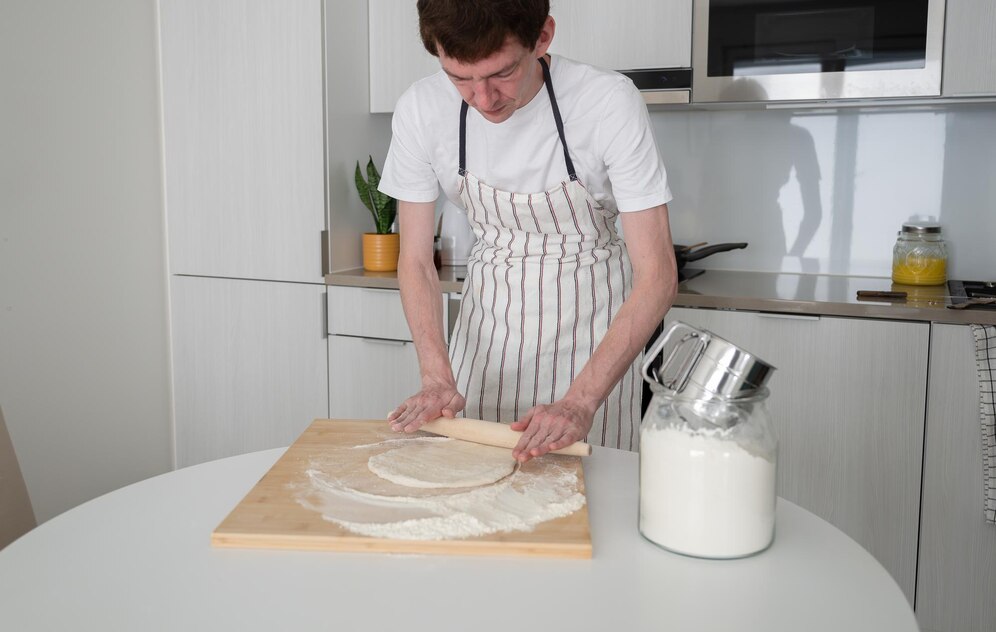Sourdough baking has made a strong comeback in recent years, with many bakers discovering the joy of creating their own tangy, flavorful loaves at home. However, for beginners, the question often arises, how to mix sourdough? The process might seem intimidating at first, but once you understand the basic principles, it becomes an enjoyable and rewarding experience.
In this guide, we’ll cover everything you need to know about mixing sourdough, from understanding the ingredients to mastering the technique. By the end, you’ll be ready to mix your own sourdough with confidence.
1. Understanding the Basics of Sourdough
Before diving into the process of mixing, it’s important to understand what sourdough is and how it differs from other types of bread.
What is Sourdough?
Sourdough is a type of bread made without commercial yeast. Instead, it relies on a naturally occurring mix of wild yeast and lactic acid bacteria to leaven the dough. This fermentation process gives sourdough its distinct tangy flavor and airy texture.
Key Ingredients:
- Flour: Typically, a combination of bread flour and whole wheat flour is used. The flour provides the starch needed for fermentation.
- Water: Hydration is crucial for the dough’s structure and helps with the fermentation process.
- Sourdough Starter: This is a culture of wild yeast and bacteria that you use to inoculate your dough. It’s the heart of sourdough baking.
- Salt: Used to control fermentation and enhance the flavor of the bread.
2. How to Mix Sourdough: Step-by-Step
Mixing sourdough dough is a simple process, but it does require attention to detail. Below is a step-by-step guide to help you mix your sourdough correctly.
Step 1: Prepare Your Sourdough Starter
Before you start mixing your dough, make sure your sourdough starter is active and bubbly. A healthy starter should be fed regularly (usually every 12 hours) and left at room temperature to rise.
If your starter is not ready, the dough won’t rise properly, and you may end up with a dense loaf.
Test for readiness: Drop a spoonful of starter into a glass of water. If it floats, it’s ready to use. If not, give it more time to ferment.
Step 2: Combine the Flour and Water
The next step is to combine the flour and water to create the dough base. Typically, you’ll use around 75-80% hydration for sourdough, which means 75-80 grams of water for every 100 grams of flour. Higher hydration levels will result in a more open crumb structure.
Start by placing your flour into a large mixing bowl. Pour the water in gradually while stirring with a spoon or your hand. Mixing by hand gives you better control over the dough’s consistency.
Once the flour and water are combined, let the mixture sit for about 30 minutes. This resting period, known as autolyse, helps to hydrate the flour and enhances gluten development, making your dough easier to handle.
Step 3: Add the Sourdough Starter and Salt
Once the autolyse is complete, it’s time to add your active sourdough starter and salt. The general rule of thumb is to add around 20-30% starter by weight, based on the flour’s total weight. For example, if you’re using 500 grams of flour, you’ll need 100-150 grams of starter.
Add the starter to the dough and mix it in by hand or with a spoon until fully incorporated. After that, sprinkle in the salt and mix again. Salt helps to control the fermentation process, so don’t skip this step.
Step 4: Mix and Knead the Dough
After all ingredients are combined, begin mixing the dough. You can use the stretch and fold technique, which involves stretching the dough and folding it over itself every 30 minutes for about 3-4 hours. This method builds strength in the dough without requiring traditional kneading, and it helps to improve the dough’s texture.
Alternatively, you can knead the dough by hand for 8-10 minutes. The dough should be smooth, slightly sticky, and elastic. Be careful not to overwork it.
Step 5: Bulk Fermentation
Once the dough is fully mixed, it’s time for bulk fermentation. This is the process where the dough rises and develops flavor. Place the dough in a bowl, cover it with a damp cloth, and leave it in a warm area to ferment for about 4-6 hours.
Every 30 minutes during the first two hours, perform a set of stretch and folds to help the dough develop more structure. After the first two hours, let the dough rest undisturbed until it has risen and appears airy.
Step 6: Shaping the Dough
After the bulk fermentation is complete, it’s time to shape your dough. Turn the dough out onto a lightly floured surface and gently shape it into a round or oval shape, depending on the type of loaf you want.
You can shape the dough using a technique known as pre-shaping, where you fold the edges of the dough into the center, forming a rough ball. After a 10-minute rest, you can proceed with the final shaping.
For a round loaf, use a technique called boule shaping. For an oval loaf, use the batard method. The goal is to create tension on the surface of the dough, which will help it rise properly during the second fermentation.
Step 7: Proofing
Once the dough is shaped, place it into a well-floured proofing basket or bowl. Cover it with a damp cloth or plastic wrap and allow it to proof for 2-3 hours at room temperature or in the refrigerator overnight for a slower fermentation (this is known as cold proofing).
Cold proofing enhances the flavor of the bread and can make it easier to handle, especially if you’re planning to bake the bread the next day.
Step 8: Baking
Finally, it’s time to bake your sourdough. Preheat your oven to 450°F (230°C) with a baking stone or Dutch oven inside. If you’re using a Dutch oven, preheat it as well.
Once your oven is preheated, carefully transfer the dough into the hot Dutch oven or onto the baking stone. For the first 20 minutes, bake with the lid on or use steam to create a crispy crust. After 20 minutes, remove the lid and continue baking for another 20-30 minutes, until the crust is golden brown and the internal temperature of the bread reaches around 210°F (99°C).
Let the bread cool completely before slicing to ensure the best texture and flavor.
3. Common Mistakes to Avoid When Mixing Sourdough
Even experienced bakers make mistakes, but avoiding common errors will help you achieve better results. Here are a few pitfalls to watch out for:
| Mistake | How to Avoid It |
|---|---|
| Using an inactive starter | Always ensure your starter is bubbly and active before use. |
| Over or under-hydrating the dough | Stick to a hydration ratio of 75-80% for the best texture. |
| Skipping the autolyse step | The autolyse improves dough extensibility and flavor. |
| Not allowing for enough fermentation | Sourdough requires patience; don’t rush the process. |
| Overkneading or underkneading | Follow the stretch and fold method to develop proper dough strength. |
4. The Science Behind Sourdough Mixing
Understanding the science of sourdough fermentation can give you a deeper appreciation for the process. The wild yeast and bacteria in your starter consume the sugars in the flour and produce carbon dioxide, which causes the dough to rise. Meanwhile, the bacteria produce lactic acid, giving sourdough its distinctive tang.
When mixing sourdough, you are not just combining ingredients but managing the fermentation process. The hydration level affects how quickly the dough ferments, while the temperature influences yeast activity. Higher temperatures speed up fermentation, while cooler temperatures slow it down.
5. Troubleshooting Tips for Mixing Sourdough
If things don’t go as planned, don’t worry! Here are some troubleshooting tips to help you out:
- Dough too sticky: Add a little more flour during the mixing process to achieve the right consistency.
- Dough too dry: Gradually add water until the dough feels soft and slightly tacky.
- Loaf is too dense: Ensure your starter is active, and try increasing the fermentation time.
- Crust not crispy: Bake with steam during the first part of the process to achieve a crispy, golden crust.
Conclusion: How to Mix Sourdough?
Mixing sourdough might seem like a complex task at first, but with practice and a clear understanding of the process that, How to Mix Sourdough?, you’ll be able to create delicious, homemade loaves with ease. From preparing your starter to mastering the technique of folding and proofing, each step plays a critical role in developing the flavor and texture of the bread. By following this guide and avoiding common mistakes, you’ll soon be baking perfect sourdough every time.










